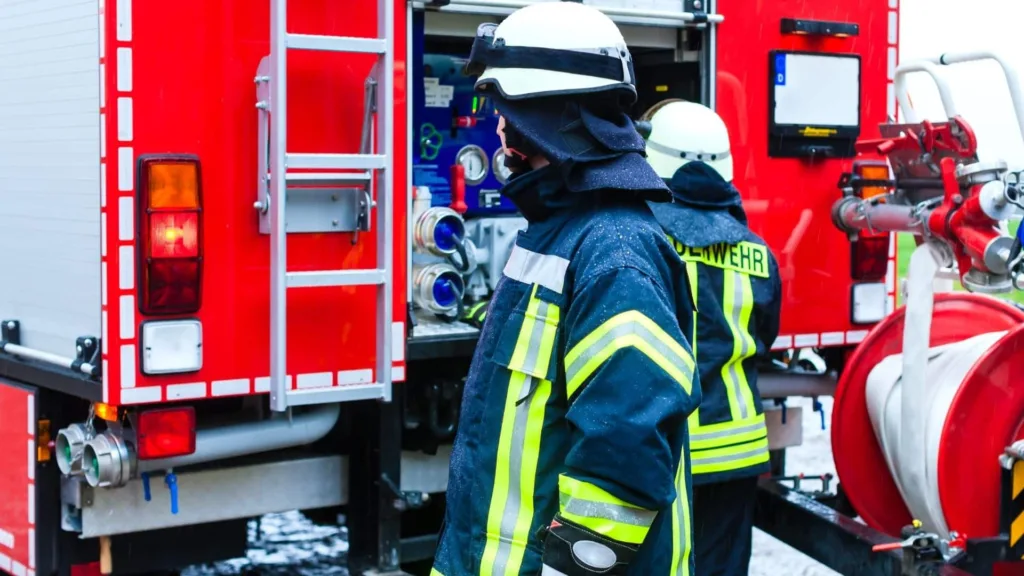Fire safety regulations and standards are rules and guidelines designed to prevent fires, minimize their impact, and protect lives, property, and the environment. These regulations vary by country but share common principles, including fire prevention, emergency preparedness, and compliance with safety measures.
Fire safety regulations are essential for ensuring buildings, workplaces, and public spaces remain safe from fire hazards. Governments and safety organizations worldwide establish these standards to reduce the risks associated with fire incidents. By following these regulations, businesses and homeowners can prevent catastrophic losses and maintain legal compliance.
Key Takeaways:
- Fire safety regulations aim to prevent fires and ensure public safety.
- Different countries follow specific national and international fire codes.
- Fire prevention involves risk assessments, safety measures, and emergency planning.
- Compliance with fire regulations is mandatory for building owners and businesses.
- Fire detection, suppression systems, and evacuation plans are crucial components of fire safety.
- Regular inspections and drills enhance fire preparedness.

Understanding Fire Safety Regulations
Building Design and Construction Standards
Fire safety starts with the foundation of a building. Construction codes dictate the use of fire-resistant materials and techniques to limit fire spread.
- Fire-resistant materials: Builders must use materials that slow the spread of flames, such as concrete, brick, and fire-rated drywall.
- Fire suppression systems: Automatic sprinklers, fire doors, and firewalls help control fires before they grow.
- Building codes: Regulations like the International Building Code (IBC) and the National Construction Code (NCC) ensure fire safety measures are met.
Fire Detection and Alarm Systems
Early fire detection saves lives. Alarm systems notify occupants and emergency responders when smoke or flames are detected.
- Smoke detectors: Required in homes, offices, and public buildings.
- Fire alarms: Must be loud and distinct to alert occupants.
- Emergency communication systems: Help coordinate safe evacuations.
- NFPA 72 standards: Outline specific fire alarm requirements.
Emergency Exits and Evacuation Plans
A well-structured escape route is crucial in a fire emergency.
- Clearly marked exits: Doors must be visible and unobstructed.
- Illuminated signs: Guide people to safety in low-visibility conditions.
- Evacuation plans: Maps and instructions posted in buildings.
- Fire drills: Regular practice enhances preparedness.
Fire Prevention Measures
Fire prevention minimizes the likelihood of fire incidents.
- Identifying fire hazards: Electrical faults, flammable materials, and poor maintenance.
- Fire Prevention Plans (FPP): Required for businesses to outline safety measures.
- Maintaining fire extinguishers: Ensuring they are functional and accessible.
Legal Responsibilities and Compliance
Fire Safety Responsibilities of Property Owners
Building owners and employers must adhere to fire safety laws to protect occupants.
- Regular fire risk assessments: Identifying and mitigating hazards.
- Compliance with laws: Following local and national fire safety regulations.
- Training employees: Educating staff on fire prevention and evacuation.
Global Fire Safety Standards
Fire safety laws vary by region but maintain similar objectives.
United States
- NFPA codes: Include NFPA 101 (Life Safety Code) and NFPA 72 (alarm systems).
- OSHA standards: Mandate Emergency Action Plans (EAPs) for workplaces.
United Kingdom
- Building Regulations 2010 (Part B): Covers escape routes and fire detection.
- Regulatory Reform (Fire Safety) Order 2005: Requires risk assessments.
European Union
- Construction Products Regulation (CPR): Mandates fire-resistant materials and emergency exits.
Australia
- National Construction Code (NCC): Specifies fire resistance and evacuation routes.
- AS 3745: Covers emergency planning and training.
Canada
- National Building Code (NBC): Regulates fire resistance and alarm systems.
- Provincial codes: Vary by region for additional safety measures.
India
- National Building Code (NBC) Part 4: Outlines fire prevention and life safety measures.
China
- Code for Fire Protection Design of Buildings (GB 50016): Covers fire resistance, separation, and evacuation routes.
Importance of Fire Safety Compliance
Adhering to fire regulations provides multiple benefits:
- Ensures occupant safety: Reduces the risk of injuries and fatalities.
- Minimizes property damage: Prevents fire from spreading.
- Legal protection: Avoids fines and penalties.
- Boosts emergency response efficiency: Helps firefighters and first responders.
Additional Fire Safety Facts
- Fire extinguishers should be inspected monthly and replaced if damaged.
- The most common cause of home fires is unattended cooking.
- Sprinkler systems can reduce fire deaths by 80%.
- Smoke alarms should be tested at least once a month.
FAQs About Fire Safety Regulations
What are the basic fire safety requirements for businesses?
Businesses must install fire alarms, maintain extinguishers, conduct fire risk assessments, and train employees in emergency procedures.
How often should fire drills be conducted?
Fire drills should be held at least once a year, but high-risk environments may require more frequent drills.
Are fire sprinklers mandatory in all buildings?
Regulations vary, but high-rise buildings, commercial spaces, and public facilities often require sprinkler systems.
What should a fire safety plan include?
A fire safety plan must have evacuation procedures, fire hazard identification, emergency contacts, and employee training programs.
Who enforces fire safety regulations?
Fire safety enforcement falls under local fire departments, building inspectors, and regulatory bodies like OSHA and NFPA.
Staying Safe Through Fire Regulations
Understanding and following fire safety regulations and standards are vital for protecting lives and property. Whether you’re a homeowner, business owner, or building manager, compliance with fire safety laws ensures preparedness in the event of an emergency. By staying informed and proactive, we can prevent fires and create safer environments for everyone.









